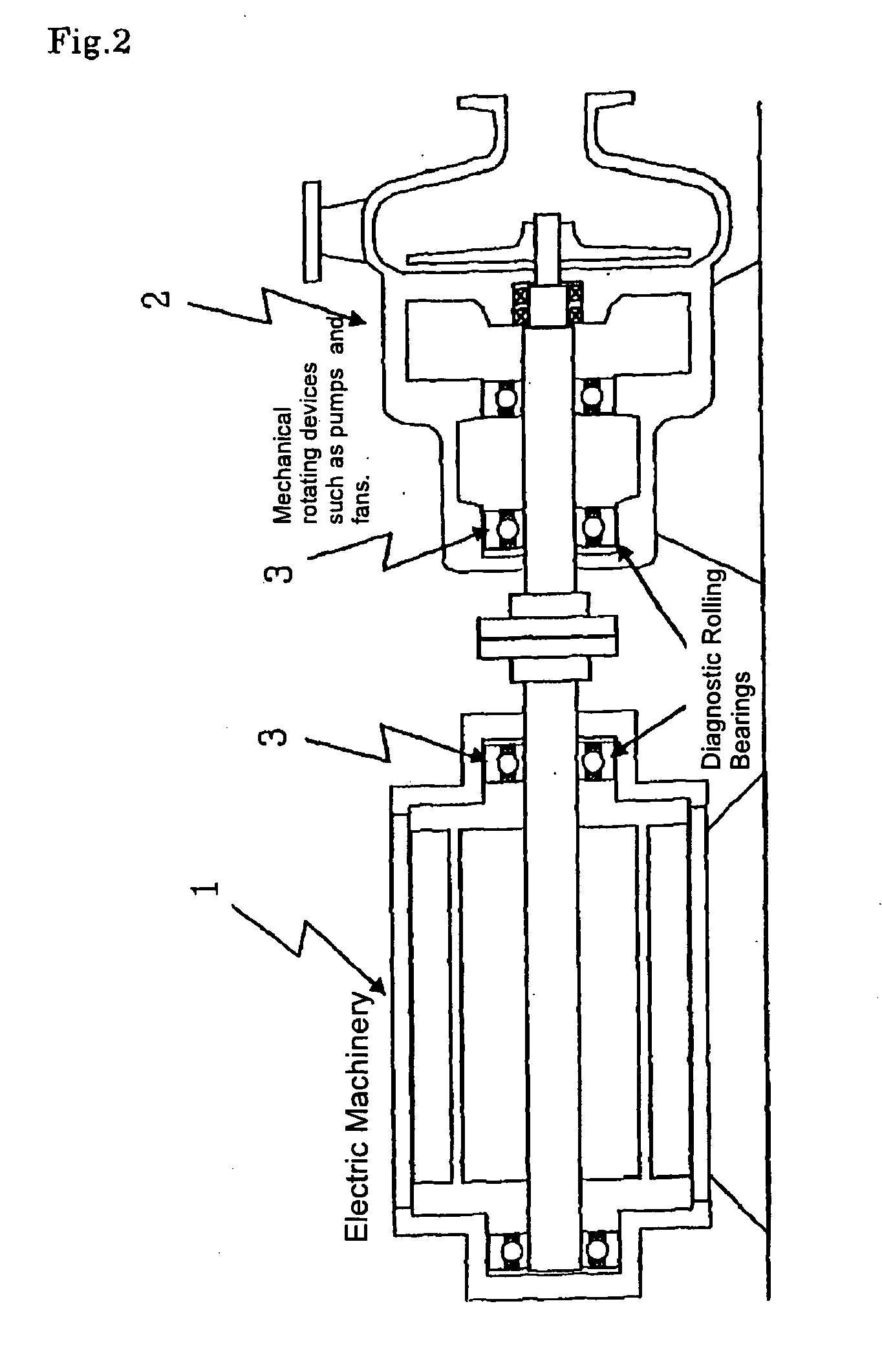Method and apparatus for diagnosing residual life of rolling element bearing
a technology of residual life and rolling bearing, which is applied in the direction of machines/engines, liquid fuel engines, instruments, etc., can solve the problems of unexpected problems of rolling bearings, interruption of machinery operation, and various inconveniences, so as to simplify the management of diagnostic results, improve the maintenance efficiency of mechanical rotating devices, and improve the effect of maintenance efficiency
- Summary
- Abstract
- Description
- Claims
- Application Information
AI Technical Summary
Benefits of technology
Problems solved by technology
Method used
Image
Examples
Embodiment Construction
[0049] The preferred embodiments of the present invention will be described in detail with reference to the accompanying drawings.
[0050]FIG. 1 is a block diagram illustrating the method of predicting residual service life for rolling bearings for the present invention. FIG. 2 is a cross-sectional example of the rolling bearings that reside on electric machinery or mechanical rotating devices, and that are the object of the predictions for the method of predicting residual service life. FIG. 3 is a flow chart illustrating the method of predicting residual service life for rolling bearings. FIG. 4 is a flow chart illustrating Step A (the preparatory stage for calculating residual service life used for the means of prediction) of the flow chart shown in FIG. 3. FIG. 5 is a flow chart illustrating Step B (the means of measurement) of the flow chart shown in FIG. 3. FIG. 6 is a flow chart illustrating Step C (the residual service life calculation stage used for the means of prediction) ...
PUM
 Login to View More
Login to View More Abstract
Description
Claims
Application Information
 Login to View More
Login to View More - R&D
- Intellectual Property
- Life Sciences
- Materials
- Tech Scout
- Unparalleled Data Quality
- Higher Quality Content
- 60% Fewer Hallucinations
Browse by: Latest US Patents, China's latest patents, Technical Efficacy Thesaurus, Application Domain, Technology Topic, Popular Technical Reports.
© 2025 PatSnap. All rights reserved.Legal|Privacy policy|Modern Slavery Act Transparency Statement|Sitemap|About US| Contact US: help@patsnap.com



